Chongqing China Three Gorges Museum is located at No. 236 Renmin Road, Yuzhong District, Chongqing. It stands at the western end of Chongqing People's Auditorium and is adjacent to People's Square, boasting a superior geographical location and convenient transportation. As a National First-Class Museum, it is a large comprehensive museum integrating cultural relics collection, preservation, research, exhibition and education. It also serves as a crucial window for interpreting the historical culture of the Three Gorges, the Bayu civilization and the civilization along the Yangtze River. With the Three Gorges culture as its core, the museum features distinct characteristics, comprehensively demonstrating the natural scenery, historical changes, folk customs of the Three Gorges region and the magnificent achievements of the Three Gorges Project. Its collection covers various categories such as bronze ware, pottery, porcelain, calligraphy and painting, stone carvings and coins, which are of great historical and artistic value. The museum building is highly recognizable, covering a total area of 30,000 square meters, with a construction area of 45,098 square meters and an exhibition area of approximately 20,000 square meters. The main building consists of the main hall, cultural relics preservation building and academic lecture hall. The exterior design adopts the concept of echoing "mountains" and "rivers", implying the mountains and rivers of the Three Gorges. It is not only modern but also rich in cultural connotations, becoming one of the landmark buildings in downtown Chongqing.
Historical Culture
The development of Chongqing Three Gorges Museum is closely linked to the Three Gorges Project. Its predecessor can be traced back to the Southwest Museum founded in 1951. After many adjustments and developments, it laid a solid foundation for the collection and academic research of the Three Gorges Museum. With the advancement of the Three Gorges Water Control Project, a large number of precious cultural relics were at risk of being submerged. To rescue, protect and display these cultural treasures carrying the history of the Three Gorges, the construction of a special Three Gorges Museum was put on the agenda.
Construction of Chongqing China Three Gorges Museum officially started in 2000, and it was completed and opened to the public on June 18, 2005, becoming the largest comprehensive museum in Southwest China at that time. The collection of cultural relics in the museum has run through the entire process of cultural relics protection and rescue during the Three Gorges Project. It has collected more than 100,000 pieces/sets of cultural relics unearthed from the Three Gorges region and related collections, including 622 pieces/sets of first-class cultural relics. These cultural relics span a long period from ancient times to modern times, systematically presenting the cultural context of the Three Gorges region from the Paleolithic Age through multiple historical periods such as the Ba State, the Chu State, the Qin Dynasty and the Han Dynasty.
In addition, the museum has dug deep into the connotations of characteristic cultures such as Bayu culture and immigrant culture. The Three Gorges region was once the core area where the Ba people lived. A large number of Ba-style bronze wares in the museum's collection, such as willow-leaf-shaped bronze swords and tiger-patterned bronze axes, have witnessed the unique style of Bayu civilization. The objects and materials related to the Three Gorges immigrants have recorded the great sacrifices and contributions made by millions of immigrants to the Three Gorges Project, becoming an important carrier for the inheritance of immigrant culture. Meanwhile, through academic research, exhibition exchanges and other activities, the museum continuously enriches the research results of the Three Gorges culture and promotes the dissemination and exchange of civilizations along the Yangtze River.
Main Exhibitions
The Magnificent Three Gorges Exhibition Hall
As one of the core exhibition halls of the Three Gorges Museum, The Magnificent Three Gorges Exhibition Hall covers an area of about 1,800 square meters. It comprehensively displays the natural landscapes and humanistic history of the Three Gorges through a large number of cultural relics, models, pictures and multimedia means. The exhibition hall displays rock specimens and paleontological fossils from different geological periods in the Three Gorges region, including trilobite fossils and dinosaur fossils dating back hundreds of millions of years, allowing visitors to understand the formation process of the Three Gorges landform. At the same time, the exhibition hall restores scale models of famous landscapes such as the ancient plank roads of the Three Gorges, Baidi City and Zhangfei Temple, showing the architectural style of ancient buildings in the Three Gorges region. In addition, through scene reproduction, the exhibition hall presents the traditional living scenes of the indigenous people in the Three Gorges. Combined with the unearthed production tools and daily necessities, it vividly demonstrates the life wisdom of the people in the Three Gorges.

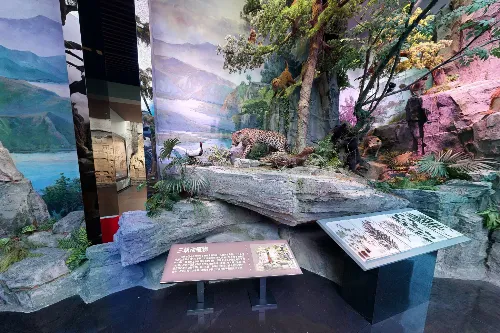
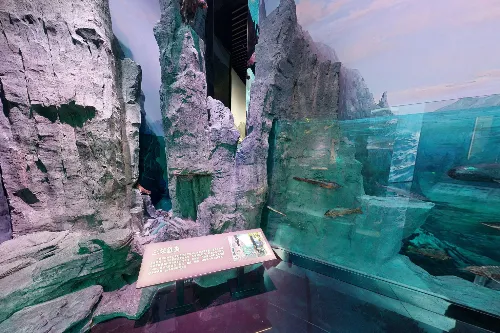
The Ancient Bayu Exhibition Hall
Focusing on the history and culture of the Bayu region from ancient times to the Warring States Period, The Ancient Bayu Exhibition Hall covers an area of about 800 square meters and focuses on displaying the splendid civilization created by the Ba people. The hall exhibits many representative cultural relics of Ba culture, including several first-class cultural relics such as bronze zun from the Shang Dynasty, willow-leaf-shaped bronze swords and tiger-patterned bronze ge from the Warring States Period. These bronze wares are uniquely shaped with exquisite patterns, featuring strong Ba cultural characteristics, and have witnessed the military affairs, sacrifices and daily life of the Ba State. In addition, the exhibition hall also displays pottery, jade and other cultural relics unearthed from Ba ruins. Through these cultural relics, it clearly presents the production and life of early humans in the Bayu region, the development of tribes and the exchange and integration with surrounding cultures.
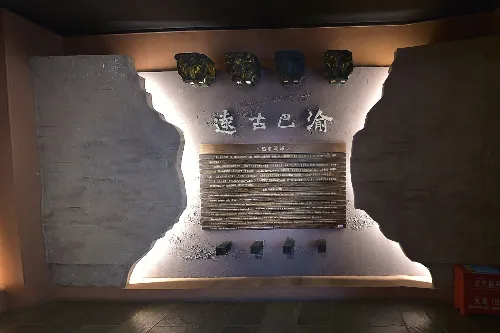
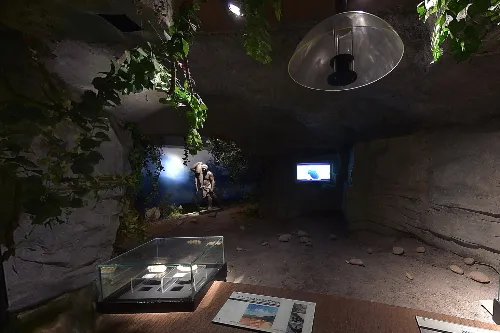
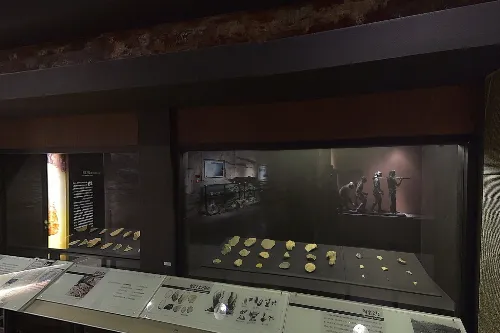
The Urban Development Exhibition Hall
Covering an area of about 1,000 square meters, The Urban Development Exhibition Hall systematically sorts out the historical process of Chongqing's development from an ancient settlement to a modern metropolis in chronological order. Starting from the capital of the Ba State in the pre-Qin period, the exhibition hall successively displays the administrative system in the Qin and Han dynasties, the commercial prosperity in the Tang and Song dynasties, the urban development in the Ming and Qing dynasties, its important status as the provisional capital during the War of Resistance against Japanese Aggression in modern times, as well as the construction and development after the founding of the People's Republic of China. The hall exhibits stone carvings, ancient books, old photos, folk artifacts and other items from different historical periods of Chongqing. Among them, the documents from the War of Resistance against Japanese Aggression and daily necessities from the Republic of China intuitively reflect the urban style and social changes of Chongqing at different historical stages, enabling visitors to deeply understand the urban cultural heritage of Chongqing.

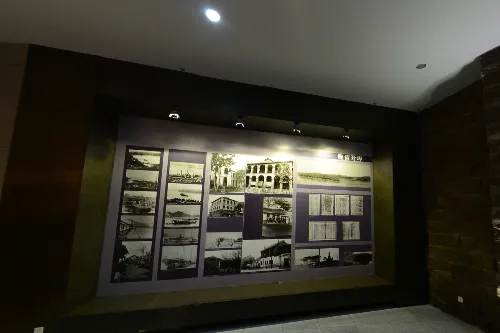
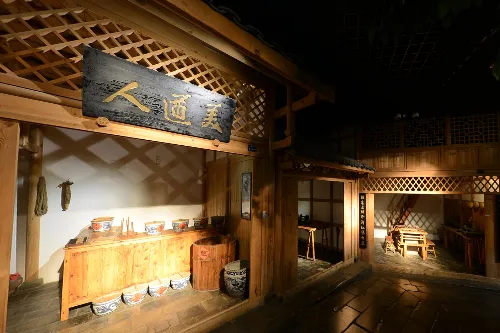
The Years of the War of Resistance Exhibition Hall
Covering an area of about 900 square meters, The Years of the War of Resistance Exhibition Hall is an important exhibition area demonstrating Chongqing's history during the War of Resistance against Japanese Aggression. Through rich cultural relics, pictures, documents and scene restoration, the exhibition hall comprehensively presents the important history of Chongqing as the wartime capital from 1937 to 1945. It displays physical objects such as weapons and equipment, government documents, newspapers and periodicals, and daily necessities of the people during the War of Resistance against Japanese Aggression, and restores scenes such as air-raid shelters and wartime offices. At the same time, the exhibition hall focuses on showing Chongqing's strategic position in the War of Resistance against Japanese Aggression, including important historical events such as diplomatic activities, industrial relocation inland and cultural salvation. It vividly reproduces the magnificent course of the Chinese people uniting their strength in Chongqing and resisting the enemy tenaciously, which has profound patriotic educational significance.

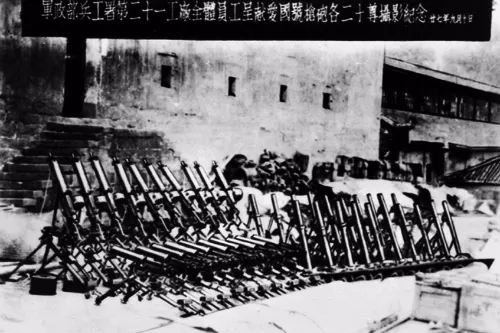
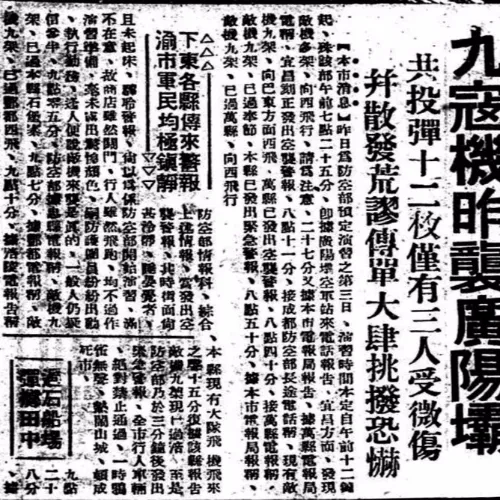
The Exhibition Hall of Porcelain Through the Dynasties
China is the birthplace of porcelain. Primitive porcelain first appeared around the mid-Shang Dynasty (about the 16th century BC). Basically mature porcelain was produced in the late Warring States Period (475 - 220 BC). Porcelain is a brilliant category among China's cultural relic treasures. Made from porcelain clay (kaolin, feldspar and quartz), porcelain is a practical and artistic product processed through crushing, elutriation, throwing and shaping, drying, glazing, and then firing in a kiln at a temperature above 1,200°C. It has a dense and hard body, no water absorption, a metallic sound when struck, and a transparent and shiny glaze.

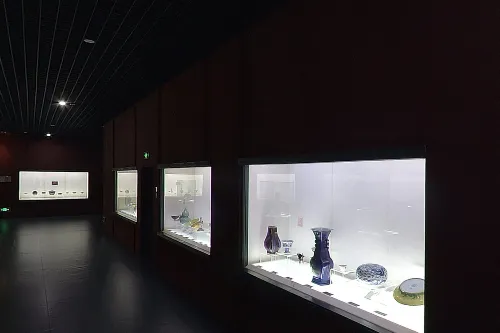
The Han Dynasty Sculpture Art Exhibition Hall
Covering an area of about 500 square meters, The Han Dynasty Sculpture Art Exhibition Hall is dedicated to displaying Han Dynasty sculpture cultural relics unearthed from the Three Gorges region and surrounding areas of Chongqing. The core exhibits in the hall include Han Dynasty pottery figurines, stone que towers and portrait stones, including various dancing figurines, musical figurines, warrior figurines, as well as exquisitely carved Han Dynasty stone coffins and portrait stones. These sculptures are simple and vivid in shape, truly reflecting the social style, funeral customs and aesthetic concepts of the Han Dynasty, and are important physical materials for the study of Han Dynasty sculpture art and social culture. Through a reasonable layout, the exhibition hall allows visitors to clearly see the technical characteristics of Han Dynasty sculptures and feel the grandeur of Han Dynasty art.

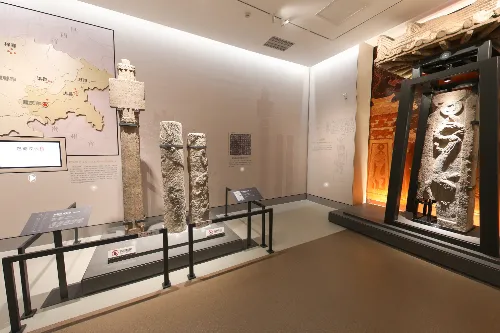
Recommended Visiting Route
A half-day in-depth visiting route is recommended, with a total duration of approximately 3.5 hours. After entering through the main gate of the museum, first head to The Magnificent Three Gorges Exhibition Hall on the first floor. Spend about 40 minutes immersing yourself in the natural and humanistic essence of the Three Gorges, which serves as the foundation for understanding the Three Gorges culture. Then proceed to The Ancient Bayu Exhibition Hall on the same floor and take 30 minutes to experience the unique charm of the early Bayu civilization, focusing on admiring the collection of Ba-style bronze artifacts. Next, go to The Urban Development Exhibition Hall on the second floor and spend 40 minutes sorting out the context of Chongqing's urban development. Then walk to the adjacent The Years of the War of Resistance Exhibition Hall and take 35 minutes to review Chongqing's history during the War of Resistance against Japanese Aggression. Afterwards, go to The Exhibition Hall of Porcelain Through the Dynasties on the third floor, set aside 25 minutes to appreciate the exquisite porcelain treasures, and finally visit The Han Dynasty Sculpture Art Exhibition Hall, spending 20 minutes to feel the primitive beauty of Han Dynasty sculptures. If time permits, you can go to the temporary exhibition hall on the basement floor of the museum to learn about the latest special exhibitions. You can adjust the staying time in each exhibition hall according to your own interests throughout the visit. The exhibition halls are connected by barrier-free passages, and the walking route is smooth without the need to retrace your steps.
Visiting Tips
- With numerous exhibition halls in the museum, it is advisable to reserve 3 - 4 hours for the visit. If you are particularly interested in a certain type of culture or exhibits, you can appropriately extend the time to 5 hours to avoid a hasty trip.
- The museum is open from 9:00 to 17:00 every Tuesday to Sunday and closed on Mondays (except for national statutory holidays). It is recommended to visit on weekdays when there are fewer tourists and the visiting experience is better.
- The museum provides free guided tour services at 10:00 a.m. and 2:30 p.m. every day, and each tour lasts about 90 minutes. You can also rent an electronic guide, which helps you deeply understand the cultural connotations behind the exhibits.
- There are multiple rest areas in the exhibition halls. You can take a short break after visiting 1 - 2 exhibition halls. The museum is equipped with water supply facilities, so it is recommended to bring your own water cup, which is both environmentally friendly and convenient.
- The museum regularly holds interactive activities such as thematic lectures and cultural relic restoration experiences. You can follow the official WeChat public account in advance. If you happen to visit during the activity period, participating in these activities can enrich your visiting experience.
Notes
- Smoking and eating are prohibited in the exhibition halls. Carrying flammable, explosive materials, controlled knives and other dangerous items into the museum is strictly forbidden. There is a luggage storage service in the museum where you can store large luggage and items that are inconvenient to carry.
- Protect cultural relics and public facilities. Do not touch the exhibits, display cabinets or walls, and do not scribble or damage the facilities in the museum arbitrarily. Violators will bear corresponding legal responsibilities.
- Taking photos is allowed in the exhibition halls, but the use of flash, tripods and selfie sticks is prohibited to avoid damage to cultural relics caused by strong light and to prevent disturbing other visitors.
- Abide by the order in the museum and keep quiet. Do not chase, run or make loud noises in the exhibition halls. It is recommended to set your mobile phone to silent mode.
- Minors, the elderly and people with mobility impairments must be accompanied by adults when entering the museum. The museum is equipped with barrier-free facilities, and you can consult the staff in advance for relevant assistance.
Transportation
- Metro: Take Metro Line 2 and get off at Zengjiayan Station. Exit from Exit C and walk about 800 meters to reach the museum; or take Metro Line 10, get off at People's Auditorium Station, exit from Exit A and walk about 500 meters to arrive.
- Bus: You can take bus routes such as No. 152, No. 181, No. 262, No. 421, No. 829 and No. 862 and get off at People's Auditorium Station. After getting off the bus, walk about 300 meters to the main gate of the museum.
- Self-driving: Depart from downtown Chongqing and follow the navigation to No. 236 Renmin Road, Yuzhong District. There are special parking lots around the museum. The parking fee is 5 yuan per hour for small vehicles, with a maximum charge of 30 yuan per day.
Opening Hours
The museum's regular opening hours are from 9:00 to 17:00 every Tuesday to Sunday, and admission stops at 16:30. It is closed on Mondays (except for national statutory holidays) for cultural relic maintenance and exhibition hall renovation. During national statutory holidays, the opening hours are adjusted to 9:00 to 18:00, and admission stops at 17:30. In addition, if the opening hours need to be temporarily adjusted due to major events or special circumstances, the museum will issue an announcement in advance through its official website, WeChat public account and other platforms. It is recommended that visitors check the latest opening information before traveling to avoid delaying their trip.
Tickets
Admission to the museum is free. You can search for the official WeChat service account "重庆中国三峡博物馆" to get the latest updates.